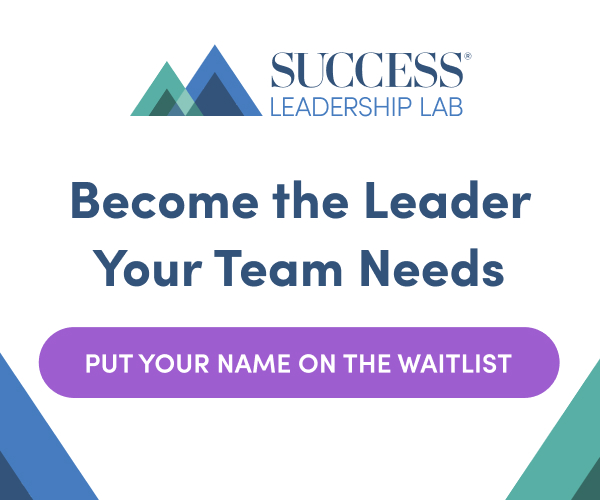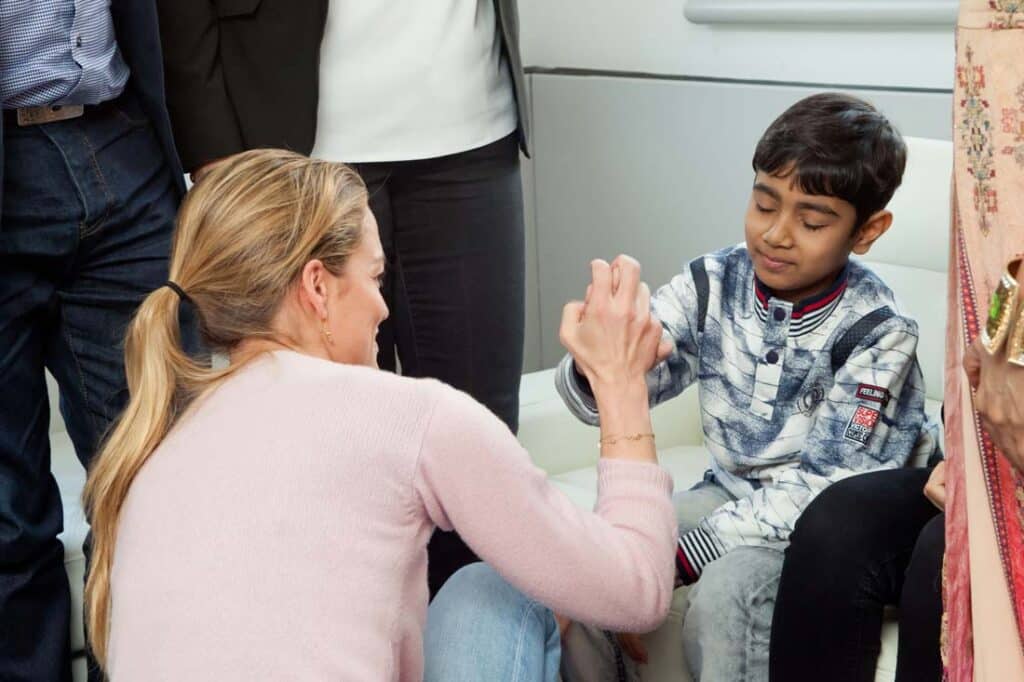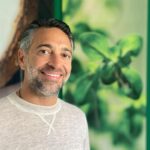In 1990, Katharina Harf’s mother, Mechtild, was diagnosed with acute leukemia. She needed to find a stem cell donor, and none of her six siblings or other family members were a match. But there was a bigger problem.
“Back then, there were only 3,000 donors on the German registry,” says Harf of the country where she was born and raised. “And basically, 3,000 donors is nothing if you want to find a donor.”
This is how, in 1991, DKMS (or Deutsche Knochenmarkspenderdatei, if your German is good) got its start. Katharina’s father, millionaire Peter Harf, a brilliant businessman and longtime executive with the multinational beauty company Coty Inc., began raising awareness of this dire need for stem cell donors in Germany and helping people register with the life-saving national bone marrow registry.
A 14-year-old Katharina Harf was there in those early days, handing out flyers, appearing on TV shows and doing radio interviews alongside her sister. “It was hard, you know? It’s very important that you highlight specific patients, because obviously the community of family and friends, they want to help and to rally around that,” she says. “But it was really hard for my sister and [me] to be on the flyers and have our whole family [appear publicly].” Harder still, her mother ultimately did not survive her battle with blood cancer.
Katharina Harf answers the call
But, before she died, Mechtild made her husband promise to continue in this work, so that other families wouldn’t have to experience what the Harfs went through. This would become the fuel that propelled DKMS to global success. In that first year, the nonprofit helped increase the number of registered donors in Germany from 3,000 to 68,000; today, the organization has registered 12 million donors worldwide, helping to coordinate more than 110,000 donations to patients in need. With the motto “We Delete Blood Cancer,” the organization is no longer only a stem cell donor center—it’s also a leader in research that supports the fight against blood cancers.
And Harf is still there. She founded the United States DKMS affiliate alongside her father in 2004, after attending Harvard University and dropping out of Columbia University’s executive program. (“I don’t even think I stayed for orientation,” she chuckles. “Because I just realized: It’s not for me.”) Instead, she too felt called to the work her father promised to do, and today she’s the executive chairwoman of DKMS US and the chairwoman of DKMS’ foundation board.

DKMS US and blood cancer donors
Which is not to say that starting DKMS’ American division was a surefire thing. Harf remembers sitting in an office at Coty, where her father was an executive, staring at a computer and wondering where on earth to start. She can laugh about it today, but back in her early 20s, she remembers crying after one of the first U.S. donor drives—which she thought could bring in another 2,000 people—only led to another 150 donors signing up.
But Harf was not so easily discouraged, either. She traveled around to hospitals, meeting with doctors and patients, and continued organizing American donor drives. She followed the best practices that had worked so well for the organization in Germany. And she applied the things she remembered from her time spent advocating for her mother during her teens: calling newspapers, calling radio stations, handing out flyers.
“I think what is part of the DKMS philosophy is, ‘Never say no,’” Harf says. She credits the organization’s enduring impact with that dogged resourcefulness and with the fact that she did everything in a grassroots manner, slowly growing the U.S. division and bringing new people on board as it blossomed. “It was very challenging, but I feel like I always thought, ‘You know what? Every donor could save a life.’”
Success and fundraising for DKMS
Harf is nearly as proud of DKMS’ financial sustainability as she is of its effect on those experiencing blood cancers. “We are very professionally run—my dad applied everything he knows from the business world to DKMS, only that our bottom line is saving lives,” she says. “I always say now, ‘I learned more from him than if I had gone to business school.’”
DKMS operates in such a way that they’re paid by patient insurance companies, and that money supports overhead costs to cover expenses or support their research in the field of blood cancer and blood diseases.
It’s not that they don’t rely on grants or donations—as with any nonprofit, every single dollar counts. But it means that when DKMS hosts one of its record-setting fundraising galas, the organization can tell people exactly where their donations are going: $5,000 will sponsor a transplant in Africa, for example, while $10,000 sponsors a child in India.
“I think you have a duty as a nonprofit to run your operation completely efficiently, and that’s why we apply those practices to DKMS,” Harf says. “For someone to donate money to you, you have to be completely transparent where their money is going.”
Diversity challenges
Decades into this work, Harf says there’s always a new challenge: “I’m still really striving to create more diversity, especially in the U.S.”
Ethnicity is a major factor in whether cells will be a match, and so, while DKMS donor cells travel to 63 different countries, for example, roughly one-third of DKMS’ German donors donate to American patients. For Harf, who has a Black husband and biracial children, this need hits especially close to home. “I think we have to do a better job at trying to give equal chances to patients.”
Asked to share advice for people who have a cause of their own they’d like to raise funds and awareness for, Harf says it’s important to be “very, very mindful.” She recommends talking with experts and others in the field, asking, “Where can I move the needle?” And she suggests taking a similar grassroots approach, starting small and building upon your wins year after year.
“If I hadn’t been patient and been happy about every donor, about every patient [who] donates…” she trails off. “You know, I always said, ‘If I can have a part in saving one life, then what more do you want?’”
Want to join DKMS in the fight against blood cancer? Visit dkms.org/get-involved to register as a donor, learn about the patients they help and more.
This article originally appeared in the May/June 2024 issue of SUCCESS magazine. Photo by Grainge Photography/Courtesy of DKMS.










